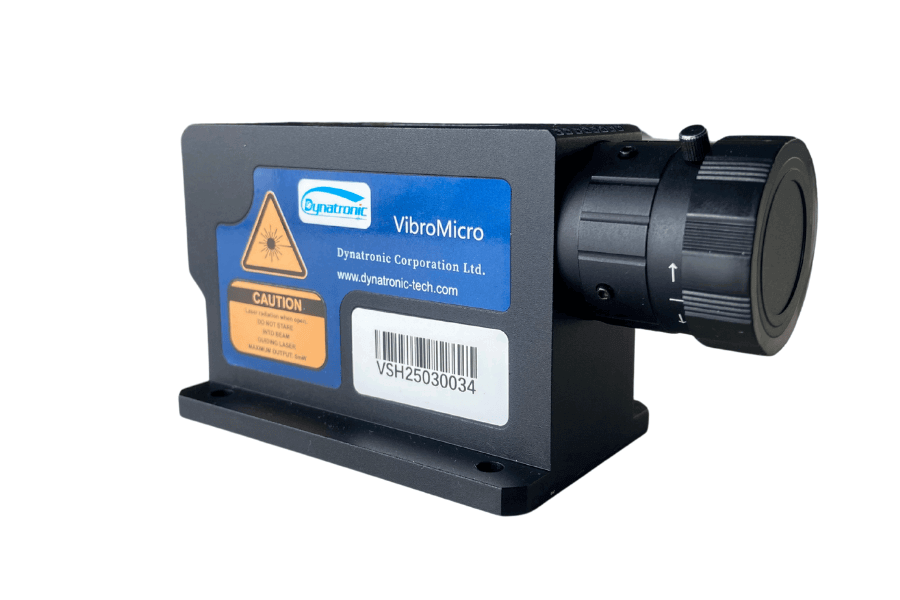Non-Contact Natural Frequency Testing with VibroMicro
1. System Components
VibroMicro Laser Vibrometer
Measurement range: DC to 25 MHz
Displacement resolution: 0.001 nm, allowing for extremely precise measurements
Supports one-dimensional vibration measurement with acquisition capabilities along the X, Y, and Z axes, ensuring accurate data capture in all necessary directions.
Non-Contact Excitation System
Types of exciters available include acoustic, electromagnetic, and air-bearing models.
The frequency range spans from direct current (DC) up to 10 kHz.
The maximum excitation force offered is 20 Newtons, with customizable options to suit specific application requirements.
Intelligent Control Platform
Frequency sweep range: 0.1Hz to 500kHz, covering a broad spectrum for diverse applications.
Sweep modes include linear, logarithmic, and customizable options to suit specific testing requirements.
Real-time FFT analysis provides immediate frequency domain insights during measurements.
2. Testing Principle
A "non-contact excitation & non-contact measurement" closed-loop system:
Wideband excitation via acoustic/magnetic fields
Real-time structural response capture using laser vibrometer
Automatic resonance peak detection (±0.01Hz sensitivity)
Frequency Response Function (FRF) curve generation
3. Technical Advantages
| Feature | Traditional Methods | This Solution |
|---|---|---|
| Excitation Method | Contact (impact hammer/shaker) | Fully non-contact |
| Added Mass | Affects modal characteristics | Zero added mass |
| Applicable Scenarios | Lab environments | Harsh conditions (high temp/vacuum, etc.) |
4. Standard Testing Procedure
Pre-Test Setup
Laser positioning (auto-focus accuracy: ±2μm)
Exciter parameter configuration (frequency/amplitude/sweep rate)
Automated Frequency Sweep Test
Step precision: 0.001Hz
Maximum sampling rate: 256kHz
Modal Analysis
Automatic identification of first 10 natural frequencies
Vibration mode animation (4K output supported)
5. Application Cases
Case 1: Surgical Blade Modal Testing
Test object: Titanium alloy ultrasonic blade (15mm length)
Results:
1st bending mode: 28.5kHz
2nd torsional mode: 67.3kHz
Damping ratio: 0.0021 (ambient air)
Case 2: Precision MEMS Testing
Achieved 0.1Hz resolution testing on 2mg microstructures
Identified unexpected 12.7kHz resonance due to design error

